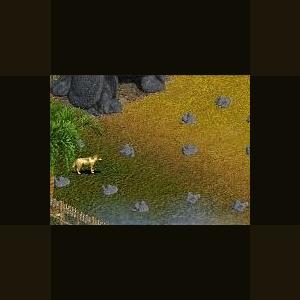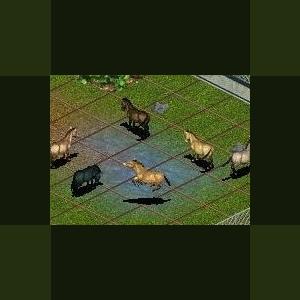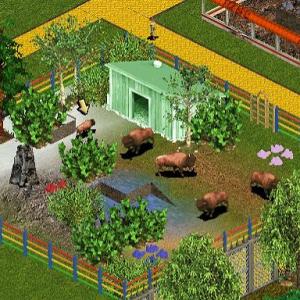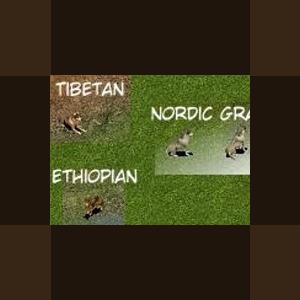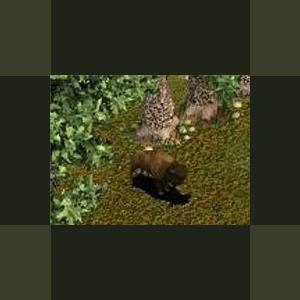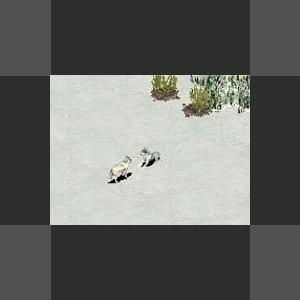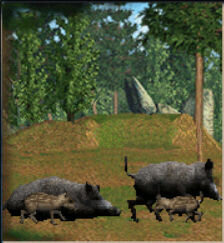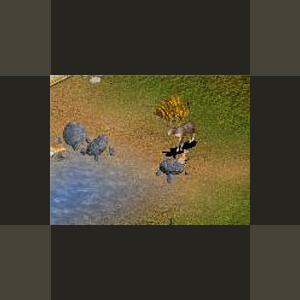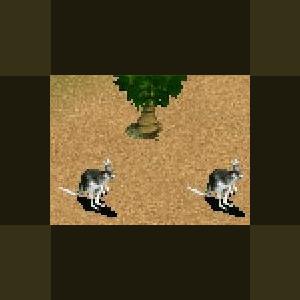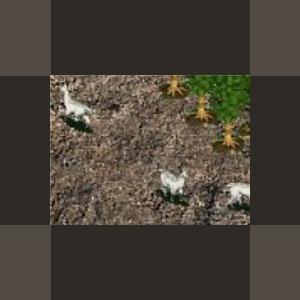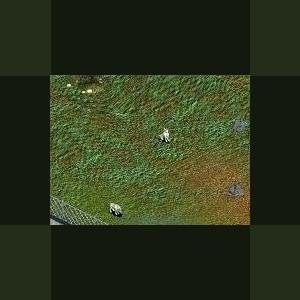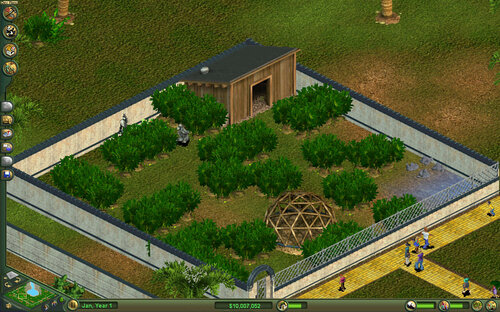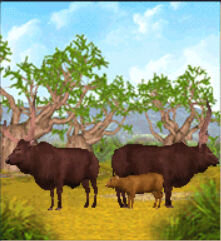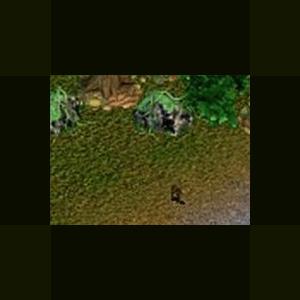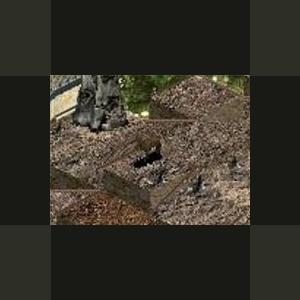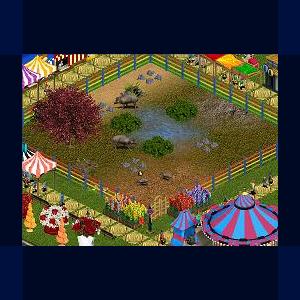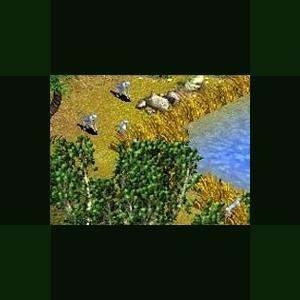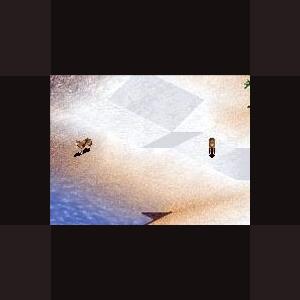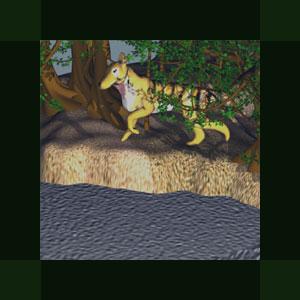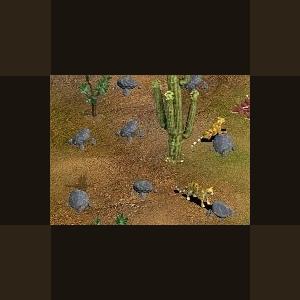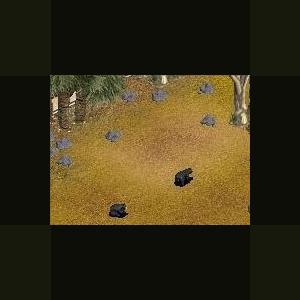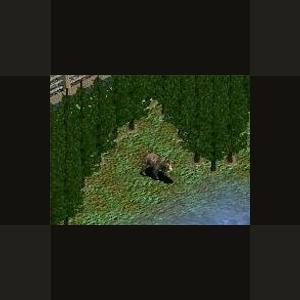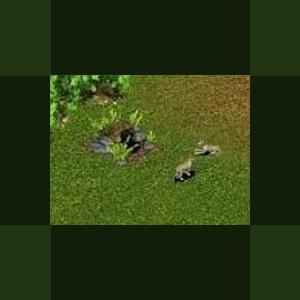279 files
-
Dingo by Coolperson5
By Guest
The dingo (plural dingoes or dingos) or warrigal, Canis lupus dingo, is a type of wild dog, probably descended from the Indian Wolf (Canis lupus pallipes). It is commonly described as an Australian wild dog, but is not restricted to Australia, nor did it originate there. Modern dingoes are found throughout Southeast Asia, mostly in small pockets of remaining natural forest, and in mainland Australia, particularly in the north. They have features in common with both wolves and modern dogs, and are regarded as more or less unchanged descendants of an early ancestor of modern dogs. The name dingo comes from the language of the Eora Aboriginal people, who were the original inhabitants of the Sydney and Canberra area.
Updated 2010-10-30
Just to save space with less in zip and smaller image.
Nothing new.
Latest Version Updated by Fern and Jay posted on May 1, 2024:
This version does not have any errors, warnings, or efficiency messages from the checkers, and the .ztd is much smaller.
495 downloads
0 comments
Updated
-
Horse Pack by Jordan
By Guest
Horse Pack by Jordan
Six colors of horses that will live happily together. Includes: bay, black, buckskin, palomino, sorrel and roan horses.
Updated September 8, 2023 by Jay to show the preferred foliage tooltip for the female and young, to correct the behaviors broken by APE, to remove unnecessary files and configuration lines, to add some spacing in the animal info, and to include a combined ztd.
Updated 2010-11-03
Just to save space with less in zip and smaller image.
Nothing new
639 downloads
Updated
-
Wood Bison by JohnT (JohnRN1)
By Cricket
Thank you for downloading the Wood Bison. These hearty, but endangered cousins of the American Bison will be well liked by your zoo guests.
"Move the .ztd file into the dlupdate (and not dupdate) folder if one exists in your Zoo Tycoon folder; otherwise move the .ztd file into the Updates folder that is in the Zoo Tycoon folder."
The default is C:\Program Files\Microsoft Games\Zoo Tycoon
Thank you to Fern and Jay for their invaluable encouragement guidance, and expertise. And thanks to Cricket at DD/tek for checking the animal in game.
--JohnT--
276 downloads
0 comments
Updated
-
Wolf Pack ll by Jordan and Ryno
By Guest
Three wolves for your zoo:
The Tibetan wolf, Nordic Gray, and Ethiopian wolf
Updated 2010-11-11
Just to save space with less in zip and smaller image.
Nothing new.
343 downloads
0 comments
Updated
-
Wisent by Ghirin
By Guest
Wisent by Ghirin
The wisent (Bison bonasus) is the Old World member of the bison family. This bison is the largest land animal in Europe and is a forest dweller, unlike the plains bison of North America.
Reference:
www.wikipedia.org
Updated 2010-11-11
Just to save space with less in zip and smaller image.
Nothing new.
363 downloads
0 comments
Updated
-
Winter Wolf by Ghirin
By Guest
Winter Wolf
Author: Ghirin
Winter wolves are large white wolves that dwell in the cold lands of the north. Unlike regular white wolves, they are able to breathe a cone of cold and have freezing bites.
Created by Ghirin 2005
Updated 2010-11-11
Just to save space with less in zip and smaller image.
Nothing new.
271 downloads
0 comments
Updated
-
Wild Boar by Khaydar
By Khaydar
Adopt a Wild Boar (Sus scrofa) to your zoos.
Wild Boar description:
Minimum happiness needed for chance of breeding: 90.
Liked foliage:
Weeping Willow Tree, White Oak Tree
Liked rock:
Large Rock, Small Rock - Medium, Small Rock - Small
Number of animals allowed per exhibit: 2-6 with 12 squares each.
A suitable exhibit for 2 of this animal has 24 squares containing terrain of:
11 Deciduous Floor, 2 Dirt, 1 Fresh Water, 4 Grass, 6 Coniferous Floor
using 10 grid squares filled with 4 Weeping Willow Tree most liked plant
and using 6 Small Rock - Small most liked rock.
Preferred shelter: Large Burrow.
Credits to Hendrix for the model and mesh
Made by Khaydar
223 downloads
- living animal
- pig
- (and 1 more)
0 comments
Updated
-
White-tail Deer by LAwebTek
By Guest
White Tailed Deer
Author: LAwebTek
http://www.zoo-tek.com/forums/index.php?download=184
Location:
Whitetail can be found in all of the US except California and Nevada; they can also be found in all southern provinces in Canada.
Common Name:
White-tailed Deer, Whitetail, or Virginia Deer
Scientific Name:
Odocoileus Virginianus
Physical Characteristics:
The Whitetail is a small to medium-sized deer. In the summer, the deer is tan or reddish brown and turns to a colder grayish brown in winter. The belly, throat, nose band, and eye ring, are white. The beautiful tail that gives the animal its name is 6-13 in (15-33 cm) with the underside white. The Whitetail will flash this warning when they sense danger and while they run.
Height: 27-45" (68-114 cm)
Weight: Male: 150-310 lb (68-141 kg); Female: 90-211 LB (41-96 kg).
Habitat and Range:
The Whitetail lives across North America on farmlands, brushy areas, woods, and even suburbs where they can find garden vegetation. Once nearly exterminated in the Northeast and Midwest of the US, the deer is now more abundant than ever. It has become the most plentiful game animal in eastern North America. This is due to the hunting restrictions and the decline in number of wolves and Mountain Lions, the Whitetail's main predators.
Behavior:
The Whitetail may be active at any time of the day, with dawn and dusk being the ideal time for sighting the animal. The deer is a beautiful runner with a bounding gate. It reaches top speeds of 35 mph (57km/h). This deer can make vertical leaps of 8.5 feet (2.6 m) and horizontal leaps of 30 feet (9 m). When the deer becomes frightened it snorts through its nose and slowly stamps its hooves, a signal that alerts other nearby deer to danger. When alarmed, the deer flags its tail, displaying a large, bright flash of white. This is the final signal of danger to all the deer and it also helps a fawn follow its mother in flight. The Whitetail does not usually travel in large herds, they are usually seen in groups of 2-10. The bucks and does herd separately most of the year, but in winter they may gather together, or "yard up." Sometimes 150 deer may group in one yard. Yarding keeps the trails passable during heavy snow and protects the deer from predators, there is always safety in numbers.
Breeding & Reproduction:
The mating season varies with the location. In the north, they will breed in November and in the southern areas they usually begin in January or February. The Whitetail is less polygamous than other deer, usually a bucks mates with only a few doe. A young doe bred for the first time usually has one fawn after a gestation of 6.5 months. Thereafter she will have twins and occasionally triplets if resources are abundant.
Care for Young:
Fawns stay with their mother into the fall or winter. The fawns are spotted and can walk within a few hours of birth, but they will remain hidden in tall grasses or brush, waiting silently and still for their mother to return and feed them. The young blend in well with most surroundings because their coats are speckled with white. They begin to lose this camouflage after 9 months. The male fawn will begin growing antlers after several months. A doe and her two-year old fawns is a common sight and easy to identify. However, the doe generally drives off her young before giving birth to another pair.
Diet:
The Whitetail grazes on most green plants, including aquatic ones in the summertime. In autumn, it will find acorns, other nuts, and corn. During winter, it browses in the woods, eating the bark off trees, including the twigs and buds of viburnum, birch, maple, and other conifers.
Programming by LAwebTek
Updated 2010-11-11
Just to save space with less in zip and smaller image.
Nothing new.
728 downloads
0 comments
Updated
-
White Rhinoceros by Khaydar
By Khaydar
Adopt a White Rhinoceros (Ceratotherium simum) for your zoos.
White Rhinoceros description:
Minimum happiness needed for chance of breeding: 90.
Liked foliage:
Thorn Bush, Umbrella Thorn Tree, Tall Grass
Liked rock:
Large Rock, Small Rock - Medium, Small Rock - Small
Number of animals allowed per exhibit: 1-10 with 50 squares each.
A suitable exhibit for 2 of this animal has 100 squares containing terrain of:
60 Savannah Grass, 10 Sand, 25 Dirt, 5 Fresh Water
using 9 grid squares filled with 4 Tall Grass most liked plant
and using 8 Small Rock - Small most liked rock.
Preferred shelter: Large Stable.
Credits to DutchDesigns for the model and mesh
Made by Khaydar
288 downloads
- living animal
- rhinoceros
- (and 1 more)
Updated
-
White Boomer by IcePengwyn
By Guest
White Boomer
Author: IcePengwyn
This is a Boomer - an Old-Man White Kangaroo that pulls Santa in Australia. Stats have been changed from the red roo.
The Boomer is mostly savannah, but also likes a little snow, sandy beaches, and some tropical terrain as they have to cover all of Australia. They like all Aussie plants, as well as palm trees, the Christmas Tree and the Snowman
In Australia, Santa Claus uses Boomers or Old-Man Kangaroos to pull his sleigh, as it is too warm for the Reindeer. Boomers like the Christmas Tree, Snowman, Palms, and a little snow for a Aussie White Christmas. The Boomers are quite tolerant of different habitats, as they are very laid back, man.
Updated 2010-11-11
Just to save space with less in zip and smaller image.
Nothing new.
225 downloads
0 comments
Updated
-
White Alpaca by Ghirin
By Guest
White Alpaca by Ghirin
The alpaca (Lama pacos), a relative of the llama, is a domesticated camelid from the Andes Mountains of South America.
Unlike the llama, the alpaca has been bred for its wool and is much smaller than the llama. The wool of the alpaca is among the finest in the world, bested only by that of the vicuna and certain breeds of goat.
Alpacas come in two wool varieties, suri and huacaya. The wool of the suri alpaca is finer and straighter than that of the huacaya. It falls in locks along the sides of the suri alpaca. The huacaya alpaca is more common than the suri; its wool is crimpy and gives the huacaya a "teddy bear" appearance. The wool of either variety comes in several colors, from white to black.
The peoples of the Andes domesticated the ancestors of the alpaca approximately 5000 years ago and these animals were used as a source of wealth.
*Inspired by the Zoo Tycoon Brains Trust at the Zoo Tek Zoo Tycoon Forums.
References:
http://alpacaplanet.com/alpacas_FAQ.html
http://www.alpaca.com/thealpaca.cfm
http://www.americasalpaca.com/aboutalpacas.html
http://www.llama-llocater.com/camelid_history.html (excellent picture)
Walker's Mammals of the World, Nowak, 1999.
Updated 2010-11-11
Just to save space with less in zip and smaller image.
Nothing new.
142 downloads
0 comments
Updated
-
Westie by Jordan
By Guest
Westie by Jordan
The incredibly adorable West Highland White Terrier of Scotland. Dedicated to Paul and Snowy.
Updated 2010-11-11
Just to save space with less in zip and smaller image.
Nothing new.
170 downloads
Updated
-
Western Gorilla by Mjmannella
By mjmannella
This mod adds the Western gorilla (Gorilla gorilla) to your zoos. This was largely done to honour Kubi, a Western lowland gorilla who was a finalist in Microsoft's Beast in Show competition. Made by Mjmannella.
68 downloads
Updated
-
Watusi Cattle by Khaydar
By Khaydar
Adopt a Watusi (Bos taurus africanus) for your zoos.
Watusi description:
Minimum happiness needed for chance of breeding: 90.
Liked foliage:
Tall Grass, Savannah foliage
Animal can jump.
Number of animals allowed per exhibit: 4-15 with 20 squares each.
A suitable exhibit for 4 of this animal has 80 squares containing terrain of:
64 Savannah Grass, 8 Dirt, 8 Fresh Water
using 10 grid squares filled with 4 Tall Grass most liked plant
and 6 small rocks.
Preferred shelter: Large Stable.
Credits to DutchDesigns for the model and mesh
Made by Khaydar
165 downloads
- living animal
- bovid
- (and 1 more)
0 comments
Updated
-
Water Chevrotain by Ghirin
By Guest
Water Chevrotain
Author: Ghirin
The water chevrotain (Hyemoschus aquaticus) is the largest species of chevrotain and is native to the African rainforest. It is the size of a large rabbit, has an arched back, a raised rump, and a stocky body on slender legs. Neither sex has antlers, but the males have sharp tusks that extend below the upper lips. They have short, brown fur with pale spots and stripes on the head and neck to serve as camouflage. The head is pointed with large eyes, slit-like nostrils, and medium-sized ears.
Water chevrotains are true ruminants and are considered to be living links between the deer and the pigs. They feed mainly on fruits, leaves and buds, with occasional animal matter.
These animals are usually solitary. Females occupy a limited home range while the range of males usually overlaps the range of two females. While females stay within their home ranges for life, males are regularly expelled from their home ranged by other males.
Water chevrotains are active only at night, with females being more active than males. During the day, they rest under thick vegetation. At night, these animals come to river banks and clearings to forage. They may retreat to water as means of escape, but they do not remain in water for prolonged periods of time
Created by Ghirin 2004
Updated 2010-11-11
Just to save space with less in zip and smaller image.
Nothing new.
256 downloads
0 comments
Updated
-
Water Buffalo by Khaydar
By Khaydar
Adopt a Water Buffalo (Bubalus arnee) for your zoos.
Water Buffalo description:
Minimum happiness needed for chance of breeding: 90.
Liked foliage:
Rainforest Fern, Mangrove Tree
Liked rock:
Large Rock, Small Rock - Medium, Small Rock - Small
Animal can jump.
Number of animals allowed per exhibit: 3-15 with 20 squares each.
A suitable exhibit for 3 of this animal has 60 squares containing terrain of:
24 Rainforest Floor, 12 Dirt, 12 Grass, 12 Fresh Water
using 7 grid squares filled with 4 Mangrove Tree most liked plant
and using 5 Small Rock - Small most liked rock.
Preferred shelter: Large Stable.
Credits to DutchDesigns for the model
Made by Khaydar
184 downloads
- living animal
- bovid
- (and 1 more)
0 comments
Updated
-
Walia Ibex by Ghirin
By Guest
Walia Ibex
Author: Ghirin
http://www.zoo-tek.com/forums/index.php?download=80
The Walia ibex (Capra walie, Capra ibex walie) is the southernmost member of the ibex family. This population of wild goats is only found in the Simein Mountains in northern Ethiopia. Like other populations of ibex, the Walia ibex dwells in steep habitats.
*Inspired by the Zoo Tycoon Brains Trust at the Zoo Tek Forums
Created by Ghirin 2005
Updated 2010-11-11
Just to save space with less in zip and smaller image.
Nothing new.
216 downloads
0 comments
Updated
-
Visayan Warty Pig by JohnT (JohnRN1)
By Fern
Thank you for downloading the Visayan Warty Pig. These endangered animals need our help to keep the species alive. This animal is especially dedicated to our zoo tycoon friend, the Sagebrush Kid.
"Move the .ztd file into the dlupdate (and not dupdate) folder if one exists in your Zoo Tycoon folder; otherwise move the .ztd file into the Updates folder that is in the Zoo Tycoon folder."
The default is C:\Program Files\Microsoft Games\Zoo Tycoon
Thank you to Fern and Jay for their invaluable encouragement guidance, and expertise.
--JohnT--
265 downloads
0 comments
Updated
-
Vervet Monkey by BigCatKeeper
By Guest
Vervet Monkey
Author: BigCatKeeper
The different types of vervets vary in colour, but generally the body is a greenish olive or silvery grey. The face, ears, hands, feet & tip of the tail are black, but an obvious white band on the forehead blends in with the short whiskers. The males are slightly larger than females and are easily recognized by their turquoise blue scrota.
The vervet is classified as a medium-sized to large monkey. Its tail is usually held up, with the tip curving down. Arms & legs are approximately the same length.
Vervet Monkey created by Bigcatkeeper
Thanks to Professorpaul for some infomation!
Updated 2010-11-11
Just to save space with less in zip and smaller image.
Nothing new.
334 downloads
0 comments
Updated
-
Tibetan Fox by BigCatKeeper
By Guest
Tibetan Fox
Author: BigCatKeeper
The Tibetan fox lives in Tibet, the Sutlej Valley in northwest India, and the Mustang district in northern Nepal. They live in the uplands of its range.
They are small foxes, with an elongated muzzle. They are rusty yellow in colour, with grey on the sides of the body, and white on the face and under body. They have acute hearing. Their teeth are well-developed, especially the canines, which are longer than in most other foxes. They have dense fur to protect them from high winds.
The Tibetan fox eats mostly rodents. They live in burrows in rocks on the plateaus. The Tibetan fox lives in pairs which hunt together. Mating season is in February, and after a gestation period of 50-60 days, 2-5 kits are born in a den. There is little information on this fox species.
These foxes tend to avoid areas where humans live. They are trapped for their fur in Tibet, where hats are made from their pelts.
Tibetan Fox created by Bigcatkeeper
Idea from Professorpaul
Updated 2010-11-11
Just to save space with less in zip and smaller image.
Nothing new.
290 downloads
0 comments
Updated
-
Thylacine by Taz (Tasmanian_tiger)
By Fern
Thylacine
Author : Taz (Tasmanian_tiger)
Category : Believed to be an extinct animal, Marsupial
Updated: July 15, 2013 by Jay to correct 1 animation view, to add a bark animation from images of the growl animation, to remove unnecessary files and configuration lines, to correct configuration mistakes done by the APE program concerning sounds, and to make some minor adjustments to the animal info.
Updated : August 10, 2013 by Jay to make it like the Thylacine Family Rock and Thylacine Rock as much as its most liked in-game rock.
Current ztd date: August 10, 2013
Compatibility : All Game Versions
Thylacinus cynocephalus, which is the only recent genus and species of the marsupial family.
Thylacinidae, was apparently found only on the island of Tasmania within historic times. Since the beginning of the European occupation, there have been many reports from the Australian mainland of sightings of animals bearing a close resemblance to the thylacine. However, none of these reports have been positively confirmed as of yet (Ride 1970; Heuvelmans 1958). During late Pleistocene and the early Holocene times, the genus is known to have been widespread across Australia and nearby New Guinea. The most recent subfossilized remains from the Australian mainland date back to just over 3,000 years before present. It is widely believed that the main reason for the disappearance of Thylacinus cynocephalus from mainland Australia is due to the introduction of the domestic dog by human immigrants from Asia. This introduction may have taken place as much as 10,000 years ago, or possibly earlier (Archer 1974a; Partridge 1967). These dogs formed feral populations which created ecological competition with the thylacine. Until the arrival of European settlers in the 18th century, thylacines in Tasmania were quite safe because the feral Australian dog (dingo) had never become established there.
742 downloads
0 comments
Updated
-
Texas Ocelot by Kiger Cowgirl
By Guest
TX Ocelot by Kiger Cowgirl
The Texas ocelot (Leopardus pardalis albenscens) is the northernmost ocelot subspecies, They can be found in southern Texas and northern Mexico. Rather than the traditional rainforest habitat, these ocelots live in arid scrublands and semideserts.
Updated 2010-11-11
Just to save space with less in zip and smaller image.
Nothing new.
303 downloads
0 comments
Updated
-
Tasmanian Devil by Jordan
By Guest
Tasmanian devils are fierce carnivorous marsupials that typically live alone.
Geographic Range
Currently Sarcophilus laniarius is found only in Tasmania, although fossil evidence suggests that it once occupied much of the Australian mainland. It has been suggested that its absence in many previously occupied areas can be explained by competition with the introduced dingo in Australia. (Nowak, 1991)
Habitat
Tasmanian devils are numerous throughout Tasmania except in areas where there has been extensive habitat fragmentation and deforestation. They are most numerous in coastal heath and rangeland areas where agricultural practices maintain a constant supply of carrion. They also occur in open, dry schlerophyll forest and mixed schlerophyll rainforest. Their dens typically are located in hollow logs, caves, or burrows. (DPIWE and Nature Conservation Branch, 2005; Nowak, 1991)
Physical Description
Mass
4 to 12 kg
(8.8 to 26.4 lbs)
Length
525 to 800 mm
(20.67 to 31.5 in)
Tasmanian devils are stocky with a brownish black pelage. They have a white throat patch, white spots on their sides and backside, and a pinkish snout. The head is massive with well developed jaw muscles. Molar teeth are heavy and adapted for their role in crushing bone and tearing through muscle and thick skin. Females are slightly smaller than males. Body size varies considerably with diet, habitat, and age. Large males may reach 12 kg and 30 cm at the shoulder. Total length ranges from 525 to 800 mm and tail length from 230-300 mm. Male weight ranges from 5.5 to 12 kg and female weight from 4.1 to 8.1 kg. Fat storage occurs in the tail, as in many dasyurids. Females have four mammae and, unlike many other dasyurids, the marsupial pouch is completely closed when breeding. (DPIWE and Nature Conservation Branch, 2005; Nowak, 1991)
Reproduction
Breeding interval
Tasmanian devils breed once yearly.
Breeding season
Tasmanian devils breed in April.
Number of offspring
4 (high); avg. 2-3
Gestation period
21 days (average)
Time to weaning
5 to 6 months
Time to independence
8 months (average)
Age at sexual or reproductive maturity (female)
2 years (average)
Males compete for access to breeding females. Females are only temporarily subdued by a male for mating, there is no longer term association of males and females. (DPIWE and Nature Conservation Branch, 2005)
Tasmanian devils are monestrous. Most mating takes place in March and the young are born in April after a gestation period of 21 days. Litter size is usually 2-3, although 4 mammae are available and 4 young are possible. The young then travel to the pouch where they remain for 4 months. By 5-6 months old the young are completely weaned, becoming independent in December. Females become sexually mature at two years old. (DPIWE and Nature Conservation Branch, 2005; Nowak, 1991)
Females nurse and protect their offspring in their pouch during most of their development. After weaning the young begin to disperse from their natal range. (DPIWE and Nature Conservation Branch, 2005; Nowak, 1991)
Lifespan/Longevity
Tasmanian devils most often live to a maximum of 5 years old in the wild. Most young die immediately after dispersing out of their natal range as a result of food scarcity or competition. They may live 7 to 8 years. (DPIWE and Nature Conservation Branch, 2005; Nowak, 1991)
Behavior
Tasmanian devils are nocturnal and usually solitary. Occasionally, when individuals congregate at food sources, such as carrion, they interact aggressively but they are not territorial. When fighting, Tasmanian devils vocalize with growls, screeches, and vibratos. There also seems to be a learned dominance hierarchy, at least in captive situations.
Both males and females make nests of bark, grass and leaves which they inhabit throughout the day. They may be seen sunbathing during the day in quiet areas. (DPIWE and Nature Conservation Branch, 2005; Nowak, 1991)
Home Range
Tasmanian devils stay within a relatively small home range, traveling an average of 3.2 km in a night. (Nowak, 1991)
Communication and Perception
Tasmanian devils have keen senses of smell, sight, touch, and taste. They communicate through a wide variety of vocalizations and physical cues, such as yawning and raising their tails. Tasmanian devils are regarded with some awe because of the blood-curdling shrieks and growls they use, particularly when a group is scavenging a carcass. (DPIWE and Nature Conservation Branch, 2005)
Food Habits
Tasmanian devils have been considered livestock predators. In reality, these marsupials take most of their large prey, such as wombats, wallabies, sheep, and rabbits, in the form of carrion. Tasmanian devils are efficient scavengers, eating even bones and fur. Tasmanian devils may have depended on carrion left from Tasmanian wolf kills in historical times. Other food items, such as insects, insect larvae, snakes, and small amounts of vegetation, are taken when encountered. Tasmanian devils forage in a slow, lumbering manner, using their sense of smell to find food at night. They are famous for their rowdy communal feeding, which is accompanied by aggression and loud vocalizations. (DPIWE and Nature Conservation Branch, 2005; Nowak, 1991)
Created by Jordan for Zoo Tek Phoenix
2008
Updated 2010-11-11
Just to save space with less in zip and smaller image.
Nothing new.
502 downloads
Updated
-
Syrian Bear by Ghirin
By Guest
Syrian Bear
Author: Ghirin
Syrian bears are small-sized brown bears native to the Levant and southwestern Asia. Very few exist in the wild and the species maybe extinct there; however, Syrian bears are found in zoos around the world.
Many authorities do not consider the Syrian bear a true subspecies, but it is sometimes referred to as Ursus arctos syriacus.
The Syrian bear is thought to be the bear mentioned in the Bible.
Updated 2010-11-06
Just to save space with less in zip and smaller image.
Nothing new.
255 downloads
0 comments
Updated
-
Swift Fox by Ghirin
By Guest
The swift fox (Vulpes velox) is found in the open grasslands and dry regions of North America. It is nocturnal, preferring to stay in underground burrows during the day.
Swift foxes prey on rodents and rabbits and live in monogamous pairs.
Reference:
http://www.lioncrusher.com/animal.asp?animal=33
Created by Ghirin 2008
Updated 2010-11-06
Just to save space with less in zip and smaller image.
Nothing new.
305 downloads
0 comments
Updated

